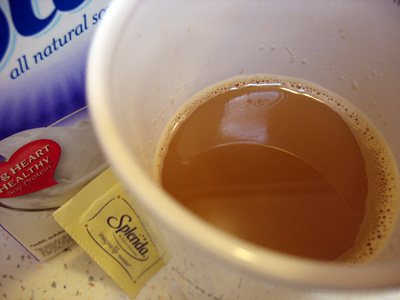I’ve always been a big advocate of using sea salt when cooking meals, rather than your average table salt. Recently I read some articles online that tried to tell readers sea salt was no better than table salt. If you happened to read those articles as well–please don’t believe them. The only positive thing I can say I got out of them was that they got me to think more about sea salt vs table salt, which is important. It’s not smart to just chase after the new fad ingredient or food without doing some research and thinking about it first. Why is it better? Why should I use it? Will it really benefit me in anyway? What’s the best way to incorporate it into my life so I will benefit from it?
I generally try to use fresh ingredients or products with no added sodium. I add other spices into recipes so I can skip salt altogether. Spicy things like red pepper flakes and cayenne pepper can add so much flavor I don’t find a need for salt. The same thing goes for potent flavors like garlic, onion, and basil. But sometimes I add a dash of sea salt to bring out those flavors, and it comforts me to know sea salt is better to use than regular table salt.
Yes, by weight, sea salt and table salt contain the same amount of sodium. Sea salt does not have less sodium than table salt. This was the point of those articles. Moderation of salt intake is one of the most important considerations in maintaining a healthy diet. However, because sea salt is not refined and usually coarse, you end up using less salt in measurements. Sea salt has a saltier, more potent flavor as well, so for less salt you get more flavor, therefore not missing the extra salt. One grind of the sea salt shaker provides more flavor than a few shakes of the table salt shaker-so true!
One of the greatest things that makes sea salt better than table salt is it’s mineral content. Here’s a paragraph from my favorite low-sodium diet cookbook “Muscle Chow,” by Gregg Avedon:
“Sea salt is obtained by the simple process of concentrating sea water under the sun. Up to 5 percent of sea salt is composed of naturally occurring potassium, calcium, and magnesium, the minerals that are responsible for the salt’s mild flavor and good taste. Because sea salt is naturally occurring, your body can readily assimilate its minerals–they’re just like the nutrients from food. Table salt, the salt most people use, is mined from inland salt deposits, heated to extremely high temperatures, and refined with chemicals. Potassium iodide or sodium iodide is added to create iodized salt. Dextrose (sugar), sodium bicarbonate, and sodium silicoaluminate, are often added to keep the salt white and easy to pour.”
Still wondering what’s the best salt to buy at the super market? Get the coarse sea salt! And here is a tip I often provide in my recipes: it is always healthier to add your own amount salt. If you don’t want the no salt added canned vegetables, tomato sauce, and cooking stock because of taste, you should buy them anyway and add your own salt. You can decrease the sodium content of your meals by buying no salt added canned foods and add sea salt instead, judging the flavor by your own taste. By doing this and switching to sea salt you can drastically decrease the amount of sodium in your diet, which can help maintain water retention in your body and decrease your risk of high blood pressure and heart disease.



